Clancy Tucker's Blog, page 232
February 8, 2016
9 February 2016 - JOKES TO MAKE YOU SMILE

JOKES TOMAKE YOU SMILE
G'day folks,
Those nuggets of gold didn’t come out of nowhere, y’all. I love a good joke, especially one that can actually be shared with people when it’s laughs that they seek. The last thing you want is some to say “Tell me a joke,” or to be in a room full of funny without any prepared material to contribute. So, for the crucial moments when you want to create a little hehe-haha, here are 50 jokes from around the web (not my jokes) that’ll get the job done for you. Most are pretty corny.
1. It’s hard to explain puns to kleptomaniacs because they always take things literally.
2. I used to think the brain was the most important organ. Then I thought, look what’s telling me that.
3. The midget fortune teller who kills his customers is a small medium at large.
4. A farmer in the field with his cows counted 196 of them, but when he rounded them up he had 200.
5. What does a nosey pepper do? Get jalapeño business.
6. What is Bruce Lee’s favorite drink? Wataaaaah!
7. The dyslexic devil worshipper sold his soul to Santa.
8. You kill vegetarian vampires with a steak to the heart.
9. There was a prison break and I saw a midget climb up the fence. As he jumped down her sneered at me and I thought, well that’s a little condescending.
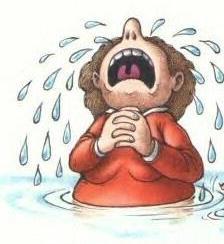
10. If you want to catch a squirrel just climb a tree and act like a nut.
11. So this guy with a premature ejaculation problem comes out of nowhere.
12. A magician was walking down the street and turned into a grocery store.
13. A blind man walks into a bar. And a table. And a chair.
14. Why don’t you ever see hippopotamus hiding in trees? Because they’re really good at it.
15. Did you hear about the Mexican train killer? He had locomotives.
16. How does NASA organize their company parties? They planet.
17. Why can’t you hear a pterodactyl go to the bathroom? Because the “P” is silent.
18. What kind of shoes do ninjas wear? Sneakers.
19. Why does Snoop Dogg carry an umbrella? Fo’ drizzle.
20. Did you hear about the new corduroy pillows? They’re making headlines everywhere!

21. Why was six afraid of seven? Because seven was a well known six offender.
22. What time is it when you have to go to the dentist? Tooth-hurtie.
23. My friend recently got crushed by a pile of books, but he’s only got his shelf to blame.
24. What did Jay-Z call his girlfriend before they got married? Feyoncé.
25. Time flies like an arrow, fruit flies like banana.
26. How many kids with ADHD does it take to change a light bulb? Let’s go play on our bikes.
27. What do you call dangerous precipitation? A rain of terror.
28. What’s the best part about living in Switzerland? Not sure, but the flag is a big plus.
29. Two fish are in a tank. One turns to the other and asks “How do you drive this thing?”
30. Why can’t a bike stand on its own? It’s two tired.
31. Why didn’t the lifeguard save the hippie? Because he was too far out man!
32. Last night I almost had a threesome, I only needed two more people!
33. What do you call a big pile of kittens? A meowntain.
34. I wondered why the baseball was getting bigger. Then it hit me.
35. Atheism is a non-prophet organization.
36. Just went to an emotional wedding. Even the cake was in tiers.
37. When you get a bladder infection, urine trouble.
38. I wrote a song about a tortilla. Well actually, it’s more of a wrap.
39. What do you call a dinosaur with a extensive vocabulary? A thesaurus.
40. How did the hipster burn his tongue? He drank his coffee before it was cool.

41. PMS should just be called ovary-acting.
42. Marketing companies should use chromosomes in advertisements because sex cells.
43. Pampered cows produce spoiled milk.
44. Learn sign language, it’s very handy.
45. I started a band called 999 Megabytes — we haven’t gotten a gig yet.
46. You want to hear a pizza joke? Never mind, it’s pretty cheesy.
47. What is the difference between ignorance and apathy? I don’t know, and I don’t care.
48. Dry erase boards are remarkable.
49. Dwarfs and midgets have very little in common.
50. How do you make Holy water? Boil the hell out of it.
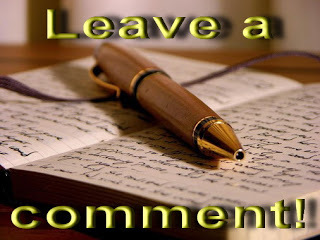
Clancy's comment: Mm ... Did ya smile at least once?
I'm ...


Published on February 08, 2016 18:50
February 7, 2016
8 February 2016 - VIOLA GREGG LIUZZO - Civil Rights Activist
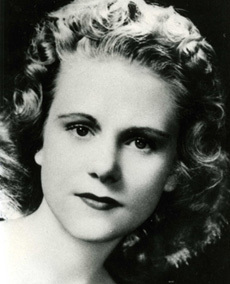
VIOLA GREGG LIUZZO - Civil Rights Activist -
G'day folks,
Once again, I present a woman of great courage. Viola Fauver Gregg Liuzzo was a Unitarian Universalist civil rights activist from Michigan. She was also the mother of five kids, and was murdered by members of the Ku Klux Klan for her efforts.
“[We're] going to change the world. One day they'll write about us. You'll see.”
—Viola Gregg Liuzzo
Synopsis
Viola Gregg Liuzzo traveled to Alabama in March 1965 to help the Southern Christian Leadership Conference—led by Rev. Martin Luther King Jr.—with its efforts to register African-American voters in Selma. Not long after her arrival, Liuzzo was murdered by members of the Ku Klux Klan while driving a black man from Montgomery to Selma. She was the only known white female killed during the Civil Rights Movement.
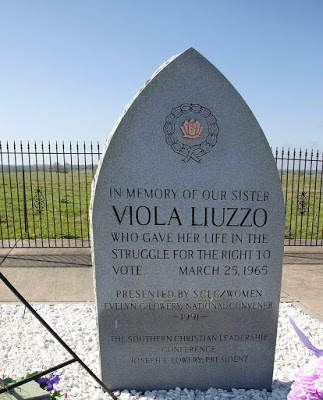
Civil Rights Activist
Civil rights worker Viola Gregg Liuzzo was born Viola Gregg on April 11, 1925, in California, Pennsylvania, part of Washington County. Viola Gregg Liuzzo traveled to Alabama in March 1965 to help the Southern Christian Leadership Conference—led by Rev. Martin Luther King Jr.—with its efforts to register African-American voters in Selma. Not long after her arrival, she was murdered by members of the Ku Klux Klan.
Before heading to Selma, Liuzzo had lived in Detroit with her second husband, an official with the Teamsters union, and her five children (two from a previous marriage). Her decision to go to Alabama was driven in part by the events of March 7, 1965, in Selma—also known as “Bloody Sunday.” On that day, approximately 600 civil rights supporters attempted to march from Selma to Montgomery along Highway 80. The group barely got started when they were attacked by state and local police officers on the Edmund Pettus Bridge using clubs and tear gas. Liuzzo had watched the brutal assault on the protesters in a news broadcast, and felt compelled to find a way to join the fight for civil rights.
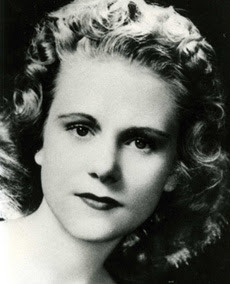
Selma March
Politically and socially active, Liuzzo was a member of the Detroit chapter of the National Association for the Advancement of Colored People. She knew firsthand about the racial injustices that African Americans often suffered in the South, having spent some of her youth in Tennessee and Georgia, among other places. Liuzzo may have been aware of the some of the dangers associated with social activism.
On March 9, 1965, Martin Luther King Jr. had again attempted to march to Montgomery from Selma with more than 1,500 other civil rights advocates. King decided to return Selma, however, after encountering the state police along the way. That night in Selma, a white minister named James Reeb was beaten to death by a group of segregationists.
On March 21, 1965, more than 3,000 marchers led by Martin Luther King Jr. began their trek from Selma to Montgomery to campaign for voting rights for African Americans in the South. Unlike previous attempts, activists on this march were protected from outside interference by U.S. Army and National Guard troops. The group reached Montgomery on March 25, 1965, and King gave a speech on the steps of the state capitol building to a crowd of approximately 25,000 people. During the march, Liuzzo drove supporters between Selma and Montgomery.
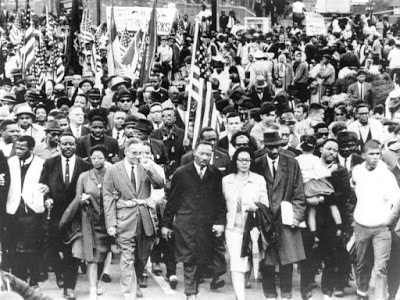
Murder
That night, Liuzzo was driving another civil rights worker with the SCLC--an African-American teenager named Leroy Moton--back to Selma on Highway 80, when another car pulled alongside her vehicle. One of the passengers in the neighboring car shot at Liuzzo, striking her in the face and killing her. The car ended up in a ditch, and Moton survived the attack by pretending to be dead.
The following day, President Lyndon B. Johnson appeared on television to announce that Liuzzo's killers had been caught. The police arrested four members of the Ku Klux Klan for the killing: Eugene Thomas, Collie Leroy Wilkins Jr., William O. Eaton and Gary Thomas Rowe (who was later revealed to be an F.B.I. informant).
Michigan Governor George Romney visited with Liuzzo's family after the murder, and stated that Liuzzo "gave her life for what she believed in, and what she believed in is the cause of humanity everywhere," according to an article in The New York Times.
On March 30, 1965, roughly 350 people attended Liuzzo's funeral in Detroit, including Martin Luther King Jr., United Automobile Workers Union President Walter P. Reuther, Jimmy Hoffa of the International Brotherhood of Teamsters, and United States Attorney Lawrence Gubow.

Not long after her death, however, came a campaign to tarnish her reputation, driven by J. Edgar Hoover, director of the FBI. Assorted false stories were leaked that she was involved with Moton, and that she was a bad wife and mother.
Eugene Thomas, Collie Leroy Wilkins Jr. and William O. Eaton were first represented by Matt H. Murphy, a lawyer for the Ku Klux Klan. After he died in a car accident, former Birmingham mayor Art Hanes took over the case. They were acquitted by an all-white jury on state charges related to the crime, but they later convicted on federal charges.
Thomas and Wilkins were sentenced to 10 years in prison; Eaton died before his sentencing. Rowe had immunity from prosecution and went into the witness protection program. (Thomas and Wilkins later named Rowe as the shooter and he was indicted on murder charges, but they were dismissed because of his immunity deal.)
Despite the efforts to discredit Liuzzo, her murder led President Lyndon B. Johnson to order an investigation into the Ku Klux Klan. It is also believed that her death helped encourage legislators to pass the Voting Rights Act of 1965. Liuzzo's story has been the subject of several books, including Mary Stanton’s From Selma to Sorrow: The Life and Death of Viola Liuzzo (1998).
In 2004, Paola di Florio showed her documentary on Liuzzo, Home of the Brave, at the Sundance Film Festival. The critically acclaimed film explored Liuzzo’s story as well as the impact of her murder on her children. The children had sued the federal government over her murder, but their case was eventually dismissed.
Years after her vicious murder, Liuzzo received some recognition for her personal sacrifice. She is among the 40 civil rights martyrs honored on the Civil Rights Memorial in Montgomery, which was created in 1989. Two years later, the Women of the Southern Christian Leadership Conference placed a marker where she was killed on Highway 80. Liuzzo was also inducted into the Michigan Hall of Fame in 2006.
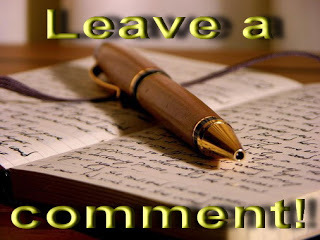
Clancy's comment: Wow. You have to admire people who stand up against extraordinary odds. I sure do. As I always say, if you want something changed, do something to bring it about.
I'm ...


Published on February 07, 2016 20:01
February 6, 2016
7 February 2016 - BURMA
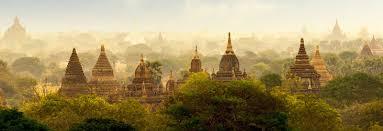
BURMA
G'day folks,
Time to feature some facts about another of my favourite countries, courtesy of Travelfish. Myanmar (formerly Burma), is a Southeast Asian nation of more than 100 ethnic groups, bordering India, Bangladesh, China, Laos and Thailand. Yangon (formerly Rangoon), the country's largest city, is home to bustling markets, numerous parks and lakes, and the towering, gilded Shwedagon Pagoda, which contains Buddhist relics and dates to the 6th century.
Burma (Myanmar) is still very much a work in progress as far as tourism goes. Vast swathes of the country are still off limits to travellers for security reasons or simply very hard to access due to bad transport and road infrastructure. When it's "finished" it's going to be quite a destination -- and there's already plenty to keep you busy.
The largest country in mainland Southeast Asia, Burma really does have it all. More than 2,100 kilometres separates the far north of the country, a sharp point thrusting into the foothills of the Himalayas between Yunnan and Assam, and the extreme south, where the thin coastal strip along the Malay Peninsula finally runs out amid a confusion of tropical islands.

In between are snow-capped mountains, lush jungles, pine forests, mighty rivers such as the Salween and Ayeyarwady, the steamy Delta, myriad ethnic minority peoples of the Kachin Hills and Shan Plateau -- the heart of the former "Golden Triangle" -- the spectacular ruined cities of Mrauk U and Bagan, vibrant Yangon with its fantastic colonial heritage, spectacular temples and last but not least – nearly 2,000 kilometres of coastline!
The names –- though many towns have since lost their colonial appellations-- are evocative of adventure, the "Orient" and the nation's incredible history: Mandalay, Arakan, Moulmein, Tavoy, Mergui, Maymo, Myitkyina. Think of Kipling, Orwell, Conrad or the Burma Road, the Chindits and Merill's Marauders -- well, now you can go there.
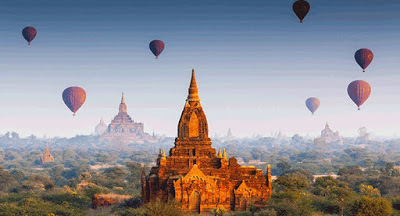
Burma borders Bangladesh, India and China to the north, Laos and Thailand to the east, with the Bay of Bengal and Andaman Sea forming the western limits. It really is the heart of Asia and all these neighbours have influenced the ethnic make-up, history, culture and of course cuisine, creating a heady and rich mix.
Ethnic Burmese (the Bamar), make up a mere 60 percent of the population (though estimates vary), with the remainder composed of well over a hundred different ethnic groups. Elderly Chin women in the northwest still sport tattooed faces, while in the northeastern hills you'll find the Karen, Kachin, Shan, Lisu, Akha, Lahu, Pa-O, Palaung, famous "long neck" Padaung, the formerly fierce warrior race of the Wa and dozens more minority groups; further south you enter Kayah, Karen and Mon States. The far northern coastal areas are inhabited by the predominantly Muslim Rakhine, while the islands of the south are still home to many animist Moken ("Sea Gypsy") people.
The food is varied and original; the people friendly with a far superior level of English than in some neighbouring countries; and safety in tourist areas is comparable to other regional destinations as tourism increases rapidly. The new flow of foreign investment as well as the increase in visitors means the country is changing fast and opening up to the outside world after years of isolation.
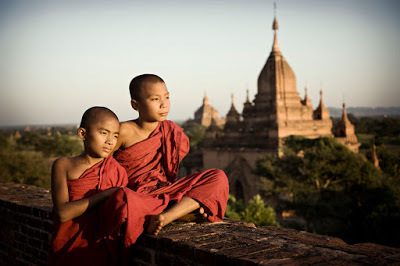
Yes, serious security issues afflict certain parts of the country and the political situation is still far from perfect. But new roads are under construction, new flight destinations are opening up all the time, land crossings by foreigners are now permitted, towns now have WiFi, ATMs and banana pancakes (it's not all good!) and with the recent political detente, ongoing peace talks and profile of Aung San Suu Kyi, optimism infuses the air.
The sudden influx of visitors however is causing some problems, as the infrastructure struggles in vain to keep pace. Popular destinations such as Mandalay, Bagan,Ngapali and Nyaung Shwe and Inle Lake are already packed during high season and certain local markets now see more tourists than locals. Hotel rooms can be near impossible to find in high season and certain hoteliers have taken advantage by whacking up prices.
Many previously remote regions are now open for business and these lesser-known destinations and sites will be far less crowded – try off the beaten track places such as Hsipaw, Mawlamyine, Hpa-an, Pathein, Kengtung -- you'll get a great reception. Or you could consider visiting the key, more popular destinations outside of high season.
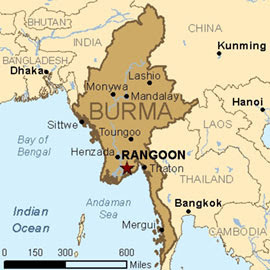
New areas are opening up all the time, but new visitors are flocking there in increasing numbers -- and the upswing in tourism will only quicken after the historic 2015 elections saw a sweeping victory by Aung San Suu Kyi's National League for Democracy party. Our recommendation -- do your research and if you decide to go, go there soon!
What not to miss
Explore the ruins of Bagan or the exhilaratingly chaotic streets of Yangon -- arguably Southeast Asia's last remaining classic metropolis. Go trekking from Kalaw to Inle Lake and visit the markets by the lakeshore. Head to the northern capital of Mandalay and spend your days exploring markets and temples.
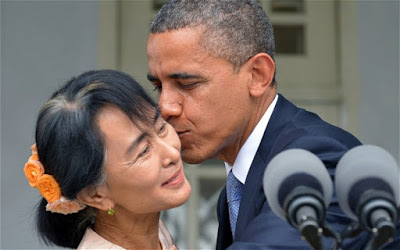
When to go
Burma has a very hot hot season and a very wet wet season and, for the first time visitor to Southeast Asia, both of these periods are best avoided. The sweet spot to visit is after the rains (which generally are at their heaviest from June to October) and before the mercury goes through the roof (April and May). Unfortunately this period, roughly November to March, is also Burma's busiest and hotel rates in particular can jump up a notch or three. Want to dodge the crowds? We'd suggest wet season before hot season as the latter can be blistering.

Travelfish:

Clancy's comment: Wow. Trust me. This country and its people are amazing. I hope to be there in January to take squillions of pictures. Check out Travelfish. It's one of the best sites for South East Asia on the Internet.
I'm ...


Published on February 06, 2016 20:52
February 5, 2016
6 February 2016 - WISE THOUGHTS

WISE THOUGHTS
G'day folks,
Welcome to some more wise quips to get you cranked up for the day.


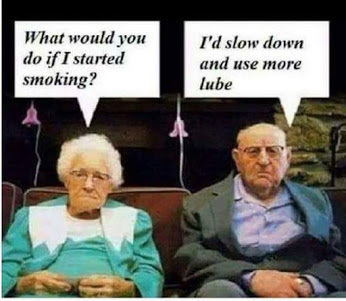
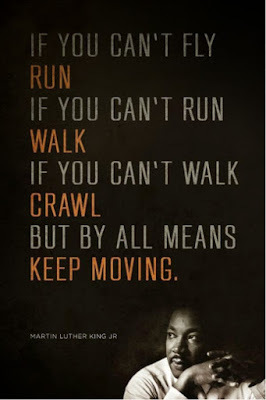

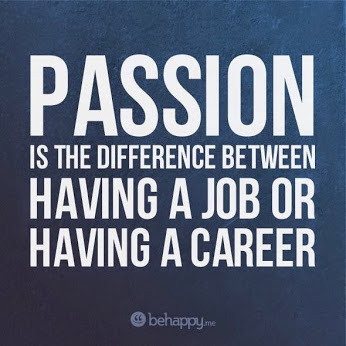
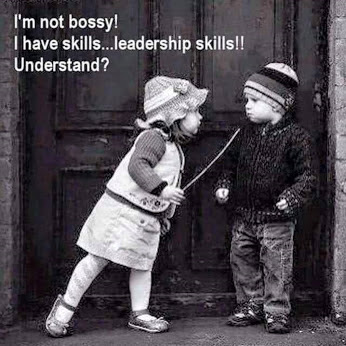

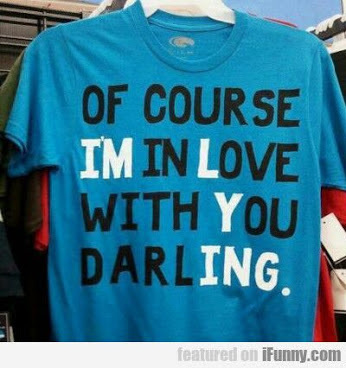
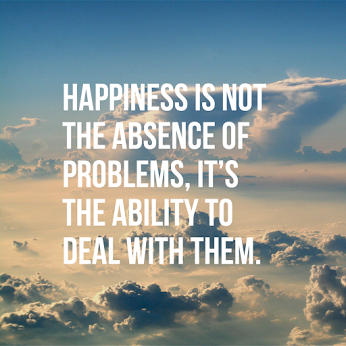
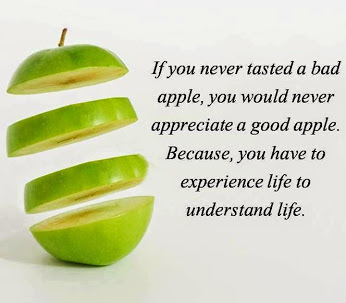
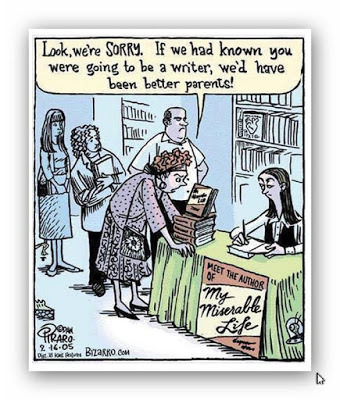
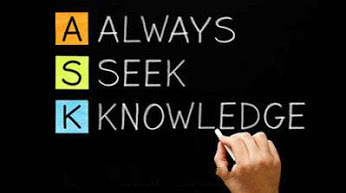
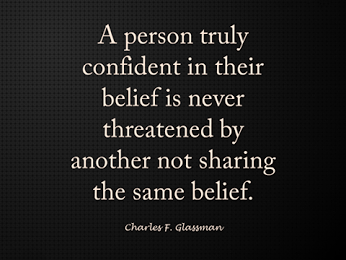
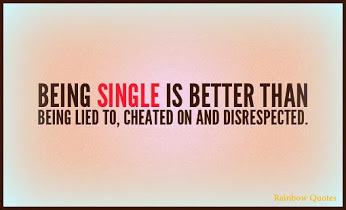
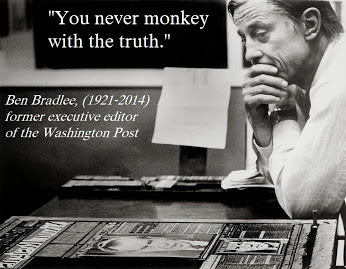


Clancy's comment: Now, you have your wisdom for the day, go spread it around the office.
I'm ....


Published on February 05, 2016 19:44
February 4, 2016
5 February 2016 - WAS MOBY DICK REAL?
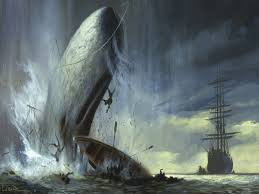
WAS MOBY DICK REAL?
G'day guys,
Today, I ask a question that you may have wondered about for some time.
While the gigantic, murderous white whale in Herman Melville’s classic novel was a fictional creation, the author did draw inspiration from real-life whaling horror stories—and an actual albino sperm whale named “Mocha Dick”—to paint his indelible portrait. In addition to first-hand whaling experience (he sailed on a voyage to the Pacific in 1841), Melville also read widely, including many contemporary accounts of whaling voyages. In writing “Moby Dick,” he skillfully wove his own experiences in with these accounts, creating one of the most complex and compelling narratives in American literature.
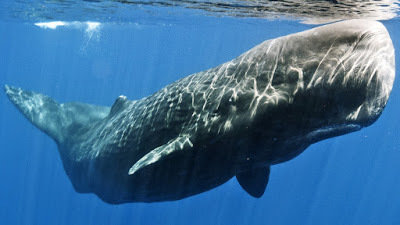
The most famous source of inspiration for “Moby Dick” was the story of the whaleship Essex, which in November 1820 was attacked and sunk by an 80-ton sperm whale some 2,000 miles off the coast of South America. Twenty crewmembers escaped the sinking whaler in three open boats, but only five would survive to be rescued in coastal waters 89 days later. In one gruesome incident, the men drew lots to determine which of them would be shot to provide sustenance for the others.
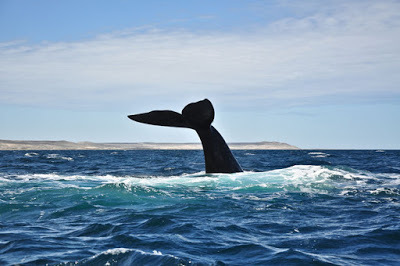
The captain of the Essex, George Pollard Jr., returned home to Nantucket, Massachusetts, but after a second whaler under his command, the Two Brothers, struck a coral reef, he was branded as a “Jonah” (an unlucky mariner) and no owner would hire him. Pollard spent his remaining years on land, working as the village night watchman, and Melville met him in person during a visit to Nantucket shortly after “Moby Dick” was published.
In the course of his reading, Melville certainly encountered a magazine story published in 1839 by the American journalist and adventurer Jeremiah N. Reynolds, entitled “Mocha Dick: Or the White Whale of the Pacific.” In the article, Reynolds shared a tale he had supposedly heard from the first mate of a Nantucket whaler, about a giant albino whale with a violent streak that prowled the Pacific Ocean.
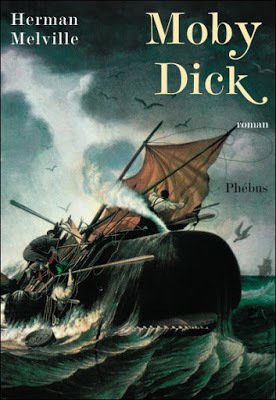
According to Reynolds: “This renowned monster, who had come off victorious in a hundred fights with his pursuers, was an old bull whale, of prodigious size and strength. From the effect of age, or more probably from a freak of nature… a singular consequence had resulted – he was white as wool!” Mocha Dick was reportedly killed off the coast of Chile, near Mocha Island, in the 1830s, but stories about his attacks on boats circulated long after his supposed death.

Clancy's comment: Mm ... Feel better now?
I'm ...


Published on February 04, 2016 19:09
February 3, 2016
4 February 2016 - TIPS FOR WRITERS

TIPS FOR WRITERS
G'day folks,
Here are some tips for you writers, courtesy of Daily Writing Tips.
A couple of weeks ago we asked our readers to share their writing tips. The response was far beyond the initial expectations, and the quality of the tips included was amazing. Thanks for everyone who contributed.
Now, without further delay, the 34 writing tips that will make you a better writer!
1. Daniel
Pay attention to punctuation, especially to the correct use of commas and periods. These two punctuation marks regulate the flow of your thoughts, and they can make your text confusing even if the words are clear.
2. Thomas
Participate in NaNoWriMo, which challenges you to write a 50,000 word novel in a month. I noticed that my writing has definitely improved over the course of the book — and it’s not even finished yet.
3. Bill Harper
Try not to edit while you’re creating your first draft. Creating and editing are two separate processes using different sides of the brain, and if you try doing both at once you’ll lose. Make a deal with your internal editor that it will get the chance to rip your piece to shreds; it will just need to wait some time.
A really nice trick is to switch off your monitor when you’re typing. You can’t edit what you can’t see.
4. Jacinta
In a sentence: write daily for 30 minutes minimum! It’s easy to notice the difference in a short time. Suddenly, ideas come to you and you think of other things to write. You experiment with styles and voices and words and the language becomes more familiar…
5. Ane Mulligan
Learn the rules of good writing… then learn when and how to break them.

6. Pete Bollini
I sometimes write out 8 to 10 pages from the book of my favorite writer… in longhand. This helps me to get started and swing into the style I wish to write in.
7. Nilima Bhadbhade
Be a good reader first.
8. Douglas Davis
While spell-checking programs serve as a good tool, they should not be relied
upon to detect all mistakes. Regardless of the length of the article, always read and review what you have written.
9. Kukusha
Learn to take criticism and seek it out at every opportunity. Don’t get upset even if you think the criticism is harsh, don’t be offended even if you think it’s wrong, and always thank those who take the time to offer it.
10. John England
Right click on a word to use the thesaurus. Do it again on the new word and make the best use of your vocabulary.
11. Lillie Ammann
After editing the work on screen or in print, I like to read the text aloud. Awkward sentences and errors that slipped through earlier edits show up readily when reading out loud.
12. H Devaraja Rao
Avoid wordiness. Professor Strunk put it well: “a sentence should contain no unnecessary words, a paragraph no unnecessary sentences, for the same reason that a drawing should have no unnecessary lines and a machine no unnecessary parts.”
13. David
Write as if you’re on deadline and have 500 words to make your point. Then do it again. And again.
14. Yvette
Sometimes I type in a large font to have the words and sentences bold before me. Sometimes, in the middle of a document I will start a new topic on a fresh sheet to have that clean feeling. Then, I’ll cut and insert it into the larger document.
I wait until my paper is done before I examine my word usage and vocabulary choices. (And reading this column it has reminded me that no two words are ever exactly alike.) So at the end, I take time to examine my choice of words. I have a lot of fun selecting the exact words to pinpoint my thoughts or points.

15. Amit Goyal
To be a good writer is to start writing everyday. As Mark Twain said, “the secret of getting ahead is getting started.”
Try using new words. i.e avoid repeating words. this way we learn the usage of different words.
Do edit your previous articles.
Start with small paragraphs like writing an article for a Newspaper, and proceed from there.
16. John Dodds
Remove as many adjectives as possible. Read Jack Finney’s tale, Cousin Len’s Wonderful Adjective Cellarfor a fantastical tale about how a hack becomes a successful author with the help of a magical salt cellar that removes adjectives from his work.
17. John Ireland
I set my writing aside and edit a day or two later with the aim of making it terse. It has trained me to be more conscious of brevity when writing for immediate distribution.
18. Jai
Try to write in simple way. Express your views with most appropriate words.
19. Mark
Read great writers for inspiration. If you read them enough, their excellent writing style will rub off onto your dazzling blog.
YOU ARE what you read (and write!).
20. Caroline
I watch my action tense and wordiness in sentences when I am writing my technical diddley.
For example, in a sentence where you say …”you will have to…” I replace it with “…you must…”, or “Click on the Go button to…” can be replaced with “Click Go to…”.
Think of words such as “enables”, instead of “allows you to” or “helps you to”.
If one word will work where three are, replace it! I always find these, where I slip into conversational as I am writing quickly, then go back and purge, purge, purge.
21. Akhil Tandulwadikar
Don’t shy away from adopting the good habits that other writers use.
Do not worry about the length of the article as long as it conveys the point. Of course, the fewer words you use, the better.
Start the article with a short sentence, not more than 8 words.

22. Julie Martinenza
Instead of adding tags (he said/she said) to every bit of dialogue, learn to identify the speaker by showing him/her in action. Example: “Pass that sweet-smelling turkey this way.” With knife in one hand and fork in the other, Sam looked eager to pounce.
23. Aaron Stroud
Write often and to completion by following a realistic writing schedule.
24. Joanna Young
One that works for me every time is to focus on the positive intention behind my writing. What is it that I want to communicate, express, convey? By focusing on that, by getting into the state that I’m trying to express, I find that I stop worrying about the words – just let them tumble out of their own accord.
It’s a great strategy for beating writer’s block, or overcoming anxiety about a particular piece of writing, whether that’s composing a formal business letter, writing a piece from the heart, or guest blogging somewhere ‘big’…
25. Shelley Rodrigo
Use others writer’s sentences and paragraphs as models and then emulate the syntactic structure with your own content. I’ve learned more about grammar and punctuation that way.
26. Sylvia
Avoid long sentences.
27. Mike Feeney
Learn the difference between me, myself and I. For example: “Contact Bob or myself if you have any questions.” I hear this very often!
28. Richard Scott
When doing a long project, a novel, for instance, shut off your internal editor and just write.
Think of your first draft as a complex outline waiting to be expanded upon, and let the words flow.
29. David
Careful with unnecessary expressions. “At this point in time” came along during the Nixon congressional hearings. Too bad it didn’t go out with him. What about “on a daily basis?”
30. E. I. Sanchez
For large documents, I use Word’s Speech feature to have the computer read the article back. This allows me to catch errors I have missed – especially missing words or words that ’sort of sound the same’ but are spelled differently (e.g. Front me instead of ‘From me’).
31. Cat
Either read the book “Writing Tools 50 Strategies for Every Writer”, by Roy Peter Clark, or read the Fifty Writing Tools: Quick List on his blog. Then join a writing group, or hire a writing coach.
32. Suemagoo
Write the first draft spontaneously. Switch off your internal editor until it is time to review your first draft.
33. Lydia
If you’re writing fiction, it’s a great idea to have a plot. It will coordinate your thoughts and add consistency to the text.
34. Pedro
Edit your older articles and pieces. You will notice that great part of it will be crap, and it will allow you to refine your style and avoid mistakes that you used to make.

Clancy's comment: There are some rippers here, but most are common sense. My tips are simple: cut to the chase, don't try to impress people with long words and wordy sentences, and don't waffle.
I'm ...
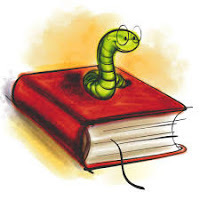

Published on February 03, 2016 19:03
February 2, 2016
3 February 2016 - KIDS IN JAPAN

KIDS IN JAPAN
G'day folks,
Here is part three of a series about kids in various countries. Japan is an island nation in the Pacific Ocean with high-rise-filled cities, imperial palaces, mountainous national parks and thousands of shrines and temples.
Tokyo, the crowded capital, is known for its neon skyscrapers and pop culture. In contrast, Kyoto offers Buddhist temples, Shinto shrines, gardens and cherry blossoms. Sushi, the national dish, is served everywhere from casual pubs to gourmet restaurants.
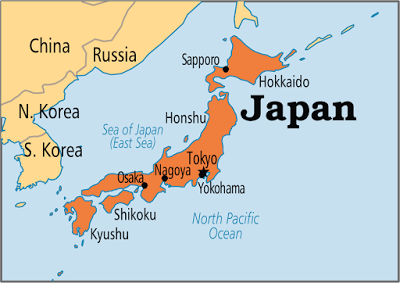
Population: 127 million
School: Schools in Japan are very competitive, and the pressure to score well begins early. Even pre-schoolers may attend “cram schools” to prepare for exams.The Japanese school year typically begins in April and lasts until March. There is a summer break of about six weeks, but kids have homework during that time.Play: Comic books have been popular in Japan since the 1700s. Comics now account for about 40% of all published material in Japan.Kite-flying is enjoyed by people of every age. Each year Japan hosts numerous kite festivals that feature giant, spectacular handmade kites. Family: Homes in Japan are small—on average, less than 1,000 square feet (compared with 2,400 in the U.S.). The typical family of four lives in five small rooms.Most fathers in Japan work long hours. As a result, some kids only see their fathers on weekends or holidaysFavorite food: Fish! Fish may be eaten at breakfast, lunch, or dinner. On average, each person in Japan eats about 68 kg (150 lbs) of fish a year.

Did you know? Japan is an island country. It consists of four main islands—Hokkaido, Honshu, Shikoku, and Kyushu > and about 3,000 smaller ones.

Clancy's comment: I love this country. The food is fabulous and the people are great.
I'm ...


Published on February 02, 2016 21:15
February 1, 2016
2 February 2016 - FABULOUS GIFS

FABULOUS GIFS
G'day folks,
These are always popular with my followers. Check out some of these amazing creations.
















Clancy's comment: Stunning, eh? I've said this before, but how sensational would one of these be on a book cover?
I'm ...

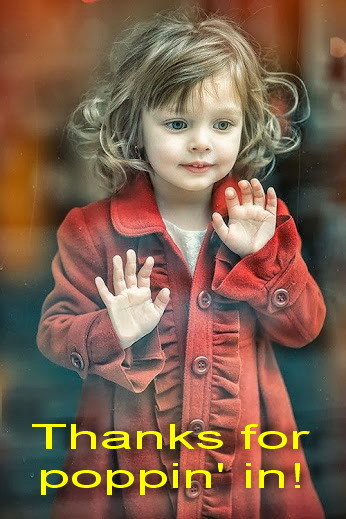
Published on February 01, 2016 05:41
January 31, 2016
1 February 2016 - MORGAN FREEMAN
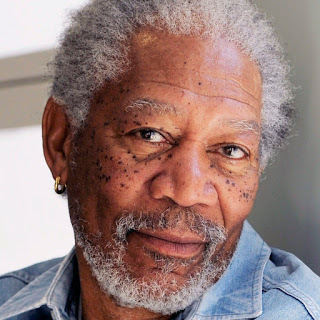
MORGAN FREEMAN
G'day folks,
Time to present one of my favourite actors. Respected actor Morgan Freeman has appeared in such films as Driving Miss Daisy, The Shawshank Redemption, Million Dollar Baby, Unforgiven and Batman Begins.
Synopsis
Morgan Freeman was born June 1, 1937, in Memphis, Tennessee. Although he loved acting, Freeman joined the air force after high school to become a fighter pilot. He later realized it wasn't what he'd wanted, and began his acting career. After years of small parts and limited success, he began to land big roles and win critical and popular acclaim. He's now one of Hollywood's most respected stars.
Actor, director and narrator Morgan Freeman was born on June 1, 1937, in Memphis, Tennessee. The youngest of five children born to barber Morgan Porterfield Freeman, Sr. and schoolteacher Mayme Edna, Freeman was raised in Chicago and Mississippi in a low-income home. Not long after he was born, Morgan's parents, like so many other African-Americans struggling under the pressures of the Jim Crow south, relocated to Chicago to find work. While his parents looked for jobs, Freeman remained with his maternal grandmother in Charleston, Mississippi.
At the age of 6, Freeman's grandmother died and he moved north to be with his mother, who had already separated from her alcoholic husband. They later moved to Tennessee and eventually back to Mississippi, where Mayme Edna settled her family in Greenwood.
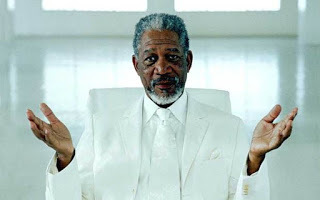
As a kid, Freeman spent a good portion of his time scraping together enough money to see movies, where he formed an early admiration for actors like Gary Cooper, Spencer Tracy and Sidney Poitier. It was by chance that Freeman himself got into acting. He was in junior high school and, as punishment for pulling out a chair from underneath a girl he had a crush on, Freeman was ordered to participate in the school's drama competition. To his surprise, and probably school administrators, the 12-year-old proved to be an immediate natural on the stage, taking top honors in the program.
But while Freeman loved to act, flying—in particular the idea of being a fighter pilot—was in his heart of hearts. And so, upon graduating high school in 1955, Morgan turned down a partial drama scholarship and joined the U.S. Air Force. The military, though, proved to be much different than what he'd expected. Instead of darting around the skies, Freeman was relegated to on-the-ground activity as a mechanic and radar technician. He also realized that he didn't want to be shooting down other people.
"I had this very clear epiphany," he told AARP Magazine. "You are not in love with this; you are in love with the idea of this." In 1959, Freeman left the Air Force and tried his fortunes out West, moving to Hollywood to see if he could make it as an actor. It wasn't an easy life. He took acting classes and struggled to find work. In the early 1960s, he moved again, this time to New York City, where more petty day jobs and nighttime auditions followed.
Big Break In 1967, the same year he married Jeanette Adair Bradshaw, Freeman's big career break came when he landed a part in an all African-American Broadway production of Hello, Dolly! starring Pearl Bailey. Around that time, Freeman also performed in an off-Broadway production of The Nigger Lovers.
Some national exposure followed in 1971, when he started appearing regularly on The Electric Company, a public television-produced children's TV show that focused on teaching kids how to read. On a show that included such current and future stars as Rita Moreno, Joan Rivers, and Gene Wilder, Freeman had some of the show's more memorable characters, like "Easy Reader," "Mel Mounds" and "Count Dracula."
But television proved to be a grueling and demanding life for Freeman. Despite some stage work, including a Tony-nominated performance in The Mighty Gents in the late 1970s, Freeman couldn't seem to break into movies like he wanted. When The Electric Company was canceled in 1976, Freeman saw himself starring at a career that was far from grounded. His personal life was hurting, too. Long before the show ended, Freeman found that his marriage had started to fall apart, and he began drinking too much. Freeman and Jeanette divorced in 1979.
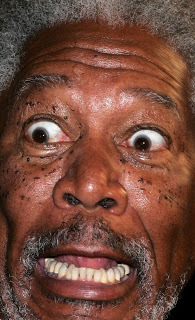
A year after his divorce, Freeman's career caught a break when he landed a part as a crazed inmate in the Robert Redford film, Brubaker(1980). However, the steady stream of film work he hoped would follow did not materialize, and Freeman was forced to retreat back to television for two hard years on the cast of the soap opera Another World.
For much of the rest of the decade, Freeman took on roles that earned him some acclaim—but not the big, powerful jobs that would garner A-list attention. There was a part in the 1984 Paul Newman film Harry and Son, and he was narrator for the TV mini series, The Atlanta Child Murders among other roles.
In 1987, Freeman's fortunes changed when he was cast in the film Street Smart, which placed the actor on the screen as the volatile pimp Fast Black. The role proved to be huge success for Freeman, earning him an Oscar nomination for Best Supporting Actor. Film critic Pauline Kael even went so far as to ask out loud, "Is Morgan Freeman the greatest American actor?" Two years later, Freeman earned more acclaim—a Golden Globe Award for Best Actor and a second Oscar nomination—as the kind-hearted but stubborn chauffeur in 1989's Driving Miss Daisy. By the 1990s, Freeman was starring in such big budget films as 1994's The Shawshank Redemption, Seven (1995) and Deep Impact(1998).
In 2005, Freeman won an Oscar for Best Supporting Actor in Clint Eastwood's Million Dollar Baby. He later reprised his role as Lucius Fox from Batman Begins (2005) for the blockbuster sequels The Dark Knight (2008) and The Dark Knight Rises (2012).
At the 2012 Golden Globes, Freeman received the Cecil B. DeMille Award for "outstanding contributions to the world of entertainment."
"I like being ecclectic," he has said about his film choices. "The more varied the better; the wider the range. I've been sucked into a kind of mold of a good guy and that's actually almost beyond my ability to control. But other than that, a good story and an interesting character is all I am looking for."
Freeman's eloquent, distinctive voice has also made him a natural for narration. His voice can be heard on such memorable films as War of the Worlds and the Academy Award-winning documentary March of the Penguins. In 1997, Freeman co-founded the movie production company Revelations Entertainment, including its online movie distribution company, ClickStar.
Off Camera While it may be a late-blooming success, it's nothing he's at all bitter about. "Success comes when it comes," he has said. "I had a career for 30 years; a 30-year career is not bad. I often think I'm probably lucky that I wasn't a wild success early on, coming up through the 1970s. I could have very easily burned out."
Freeman has coupled his ever-expanding brand with a host of charitable endeavors. The actor, who resides in the Mississippi Delta, raised money for Katrina victims not long after the devastating hurricane ripped through the area. Through Rock River Foundation, an organization he started, Freeman's group has donated millions to educational programs. And in 2004 he helped organize relief funds for hurricane victims in Grenada.
Freeman's energy extends into other realms, too. In his home state of Mississippi, the actor co-founded a blues club in Clarksdale. In recent years Freeman also earned his pilot's license.
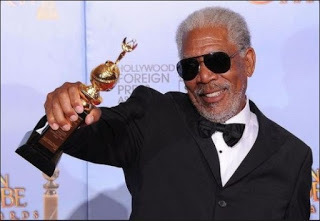
While Freeman's personal life has experienced a bit of turbulence in recent years—he and his second wife, Myrna, split in 2007, and he was in a near-fatal car accident in Charleston, Mississippi—the actor shows no signs of slowing down. In 2009, Freeman teamed up with Clint Eastwood again, playing the role of South African President Nelson Mandela in Invictus- the role earned him an Oscar nod for best actor. His choice of roles, as well as his off-the-screen demeanor, have earned him respect from even those not used to pouring out praise for their interview subjects.
"He's a delightful man," says Mike Wallace, who interviewed the actor for a 2006 piece on 60 Minutes. "He's a thoughtful man. He's in no sense a bitter man. He's still exploring his life and times. I have immense respect for Morgan Freeman."

Clancy's comment: Another interesting guy, and what a fabulous actor.
I'm ...

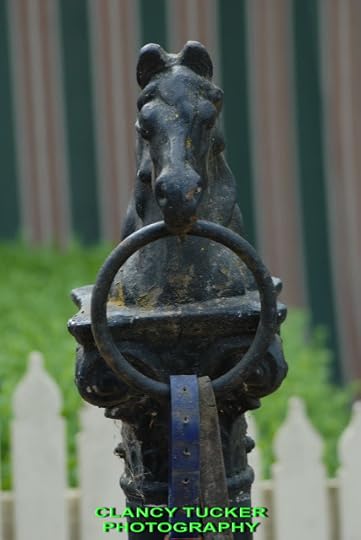
Published on January 31, 2016 17:19
January 30, 2016
31 January 2016 - WHY IS A WHITE FLAG USED TO SURRENDER?

WHY IS A WHITE FLAG USED TO SURRENDER?
G'day folks,
I love finding out about odd things. Hope you do to.
Soldiers have been using white flags to signify capitulation for thousands of years. The ancient Roman chronicler Livy described a Carthaginian ship being decorated with “white wool and branches of olive” as a symbol of parley during the Second Punic War, and Tacitus later wrote of white flags being displayed as part of the surrender of Vitellian forces at 69 A.D.’s Second Battle of Cremona.

Most historians believe blank banners first caught on because they were easy to distinguish in the heat of battle. Since white cloth was common in the ancient world, it may have also been a case of troops improvising with the materials they had on hand.
The white flag later became well established in Western warfare, but evidence shows it also arose independently in China during the Eastern Han dynasty in the first three centuries A.D. The color white has long been associated with death and mourning in China, so its soldiers may have adopted white surrender flags to show their sorrow in defeat.

In more recent history, the white flag has become an internationally recognized symbol not only for surrender but also for the wish to initiate ceasefires and conduct battlefield negotiations. Medieval heralds carried white wands and standards to distinguish themselves from combatants, and Civil War soldiers waved white flags of truce before collecting their wounded.
The various meanings of the flag were later codified in the Hague and Geneva Conventions of the 19th and 20th centuries. Those same treaties also forbid armies from using the white flag to fake a surrender and ambush enemy troops.

Clancy's comment: Well, did you know that?
I'm ...

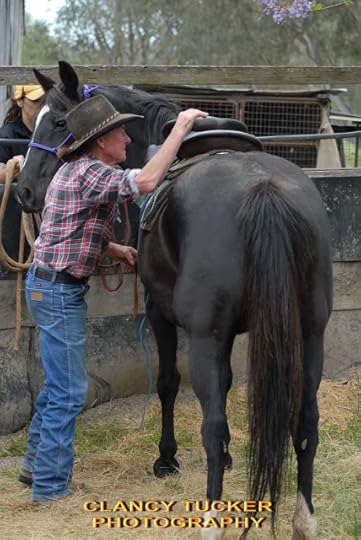
Published on January 30, 2016 00:32



